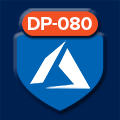
Duration: 2 Days
This course can be valuable for anyone who needs to write basic SQL or Transact-SQL queries. This includes anyone working with data as a data analyst, a data engineer, a data scientist, a database administrator or a database developer. It can also be useful for others peripherally involved with data, or wanting to learn more about working with data such as solution architects, students and technology managers.
In this module you will learn about the basics of the Transact-SQL (T-SQL) language, as well as general properties and terminology of relational databases. This module will also introduce the basic SELECT statement for retrieving data from a table.
After completing this module, students will be able to:
In the module you will learn how to control what data is returned, the order in which it is returned. You will use the ORDER BY clause, with and without paging. You will learn about various kinds of filters that can be used in the WHERE clause to control which data rows are returned. You will also learn how to manage the results by removing duplicates with DISTINCT.
After completing this module, students will be able to:
In this module, you will explore T-SQL queries which access data from multiple tables with various kinds of JOIN operations and simple subqueries.
After completing this module, students will be able to:
In the module you will explore the use of built-in functions for returning computed or special values in the SELECT list or in the WHERE clause. Functions include math functions, string functions and system functions. There are other types of functions that will be mentioned, but not discussed in detail. You will also learn how to combine rows of data into a single group, providing summary information for the group such as SUM, MIN or MAX.
After completing this module, students will be able to:
In this module, you will learn the T-SQL statements for modifying table data including UPDATE, DELETE and MERGE as well as various options for INSERT including creating a new table with data from an existing table. You will also look at how to have the system automatically supply values for columns as the data is inserted.
After completing this module, students will be able to:
Clientele ➞























Our Partners




